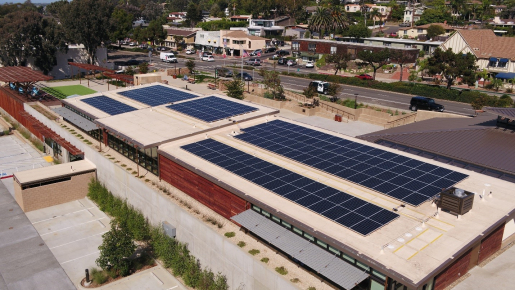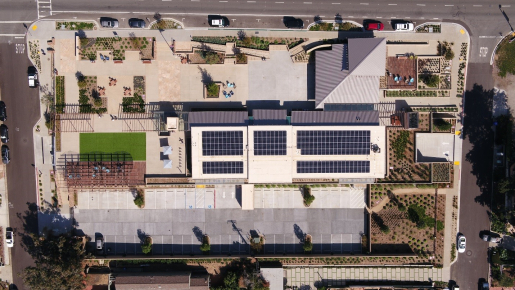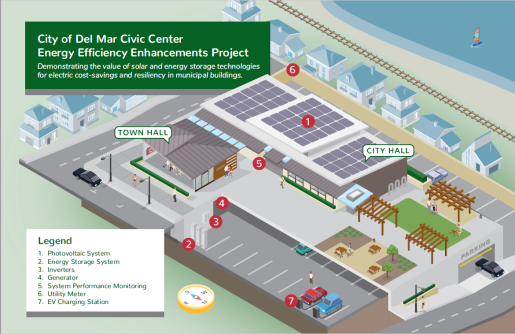Nestled on the southern coast of California, the City of Del Mar is prime for solar power opportunity. In 2017, the city leveraged that opportunity to increase energy supply reliability and save energy and money. With financial assistance from the U.S. Department of Energy’s (DOE) Office of Energy Efficiency and Renewable Energy’s (EERE) State Energy Program, Del Mar installed a 62.6 kilowatt photovoltaic (PV) system and a 120 kilowatt hour battery energy storage system on the roof of its City Hall building. The measures are expected to achieve a 90% reduction in energy use from the grid and an annual reduction of 30 metric tons of carbon dioxide emissions.
This project was a collaborative effort between the City of Del Mar and the Center for Sustainable Energy in San Diego to showcase the energy savings and performance metrics that can be provided by PV/energy storage systems. The two teams applied lessons learned from City Hall to other building projects throughout the city. DOE funds were also used to design and build an exhibit at the Del Mar Civic Center that includes an interactive kiosk, interactive displays, and an educational energy dashboard.
“We’ve been hearing over and over again about this beautiful, new facility and how well it fits with our community,” said Del Mar Councilwoman Sherryl Parks.
This project is expected to provide more than $625,000 in energy savings over the next 25 years. It will also serve as a demonstration project to achieve other goals for both residential and non-residential energy use.
“As California cities seek greater energy efficiency, it is increasingly important to develop strategies that maximize the benefits of combining solar and energy storage systems," said Alex Kaufman, City of Del Mar Energy Engineer.
EERE's State Energy Program provides funding and technical assistance to states, territories, and the District of Columbia to enhance energy security, advance state-led energy initiatives, and maximize the benefits of decreasing energy waste. The State Energy Program emphasizes the state’s role as the decision-maker and administrator for program activities tailored to their unique resources, delivery capacity, and energy goals.



